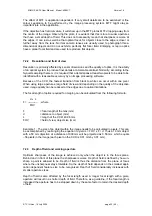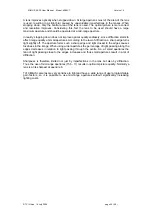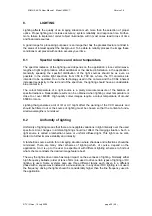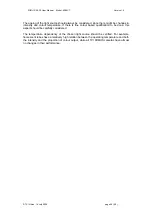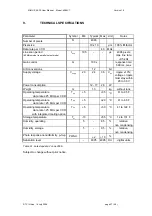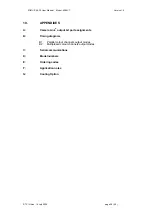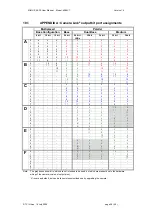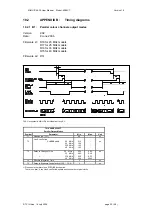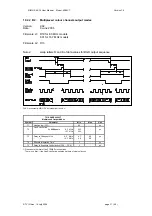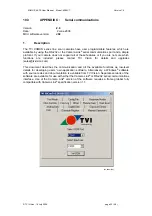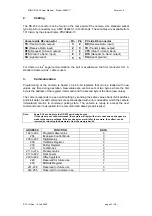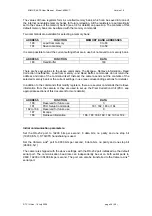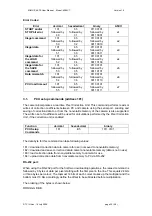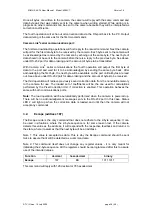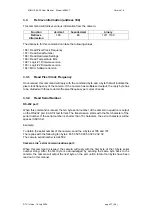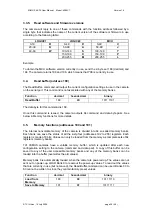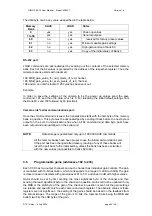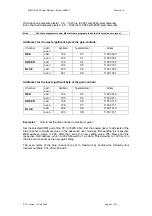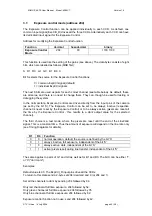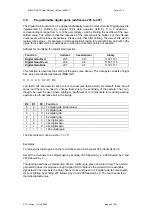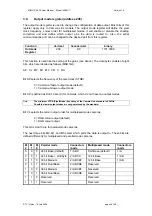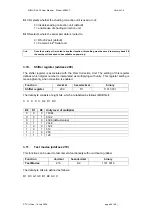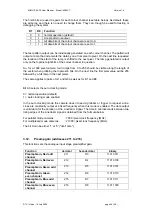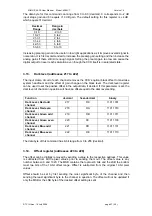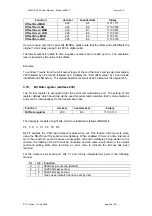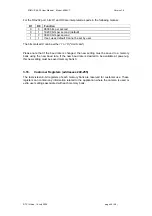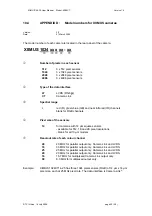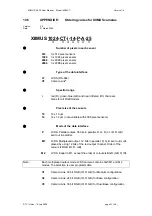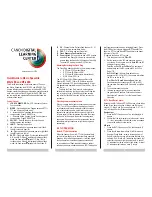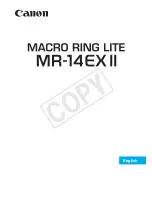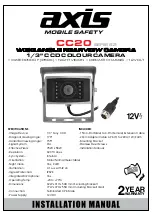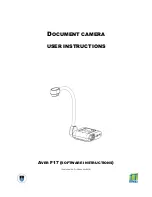
XIIMUS 4K CL User Manual. Model: 4096CT. Version 1.4
Once all bytes are written to the camera, the camera will reply with the same command and
data byte pair that was initially sent to the camera when writing started. While writing is in
progress no other commands can be sent to the camera because they will be interpreted as
correction coefficients.
The fourth operation will echo out all correction data via the RS-port back to the PC. Output
data ordering is the same as for the first two commands.
Camera Link
®
serial communications port:
The first two downloading operations will first reply to the issued command. Next the camera
will poll for the first data byte to be received by the camera. Each byte sent to the camera will
be acknowledged as received by the camera by echoing out the same byte. The next byte of
data should not be sent to the camera before there is a reply to the previous byte. See above
under RS-232 port for data ordering and the amount of bytes to be transmitted.
With Camera Link
®
serial communications the fourth operation will output the first byte of
data to the port and wait for it to be acknowledged by sending the same byte back. After
acknowledging the first byte, the next byte will be available on the port until all bytes are read
out. See above under RS-232 port for data ordering and the amount of bytes to be received.
The third operation will retrieve previously saved correction data from the nonvolatile memory
to the camera for use. The loaded set of coefficients will be the one used for calculations
performed by the Pixel Correction Unit, if correction is enabled. This operation behaves the
same with both communications ports.
Note:
The load operation will be automatically performed when the camera is powered up.
There will be no acknowledgement message sent via the RS-232 port in this case. Status
LED 2 will light up when the correction data is loaded and until then the camera will not
accept any commands.
3.2.
Escape (address 187)
The Escape code is the only command that does not adhere to the 2-byte sequence. It can
be used in situations, where the 2-byte sequence is for some reason lost. If the camera
detects this value as the address, it will respond with the respective feedback and returns to
the state, where it assumes that the next byte will be an address.
Note 1: This value is accepted as data. This is why the Escape command should be sent
twice to assure that it will be detected as a command also.
Note 2: This command itself does not change any register values - it is only meant for
initialising the 2-byte sequence. All the registers should be reprogrammed after this to assure
use of the intended values.
Function decimal
hexadecimal
binary
Escape
187 BB
1011
1011
This command will reply with 120 decimal or 78 hexadecimal
© TVI Vision, 14 July 2006 page 36 ( 56 )


